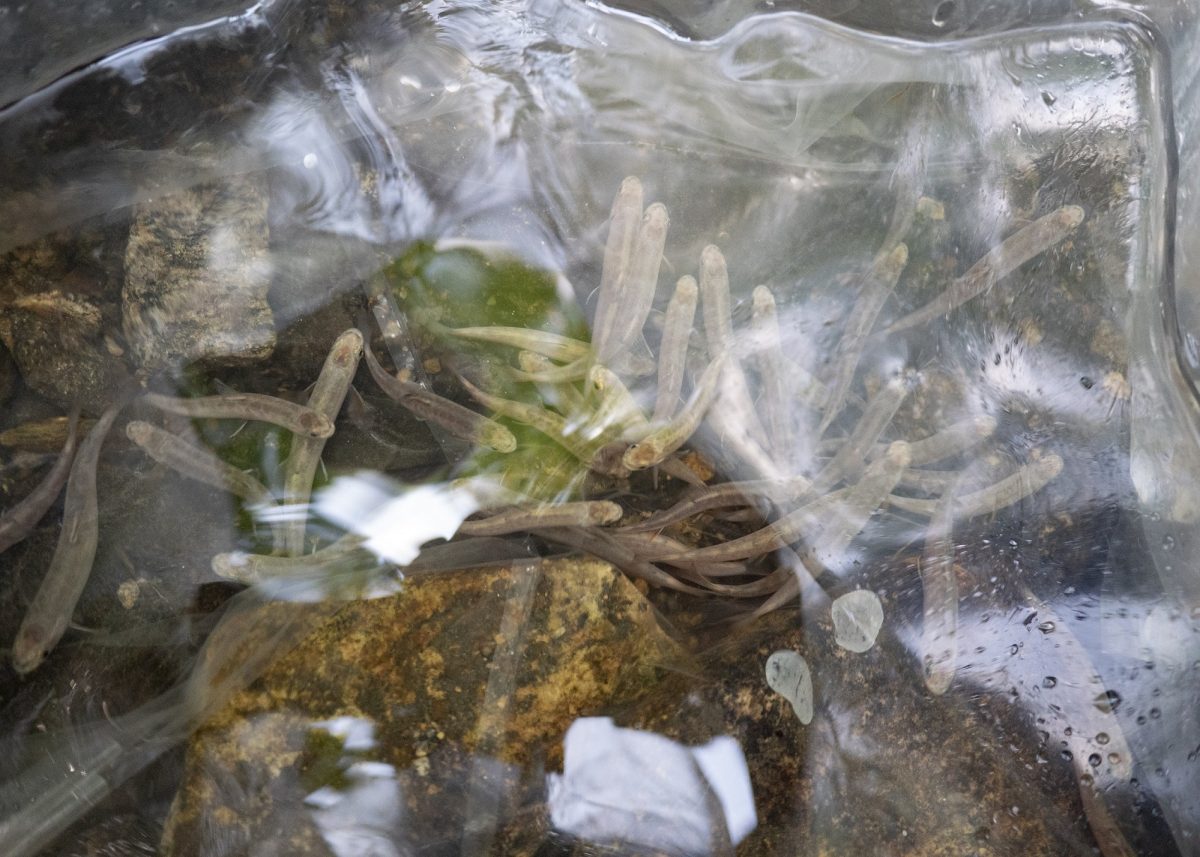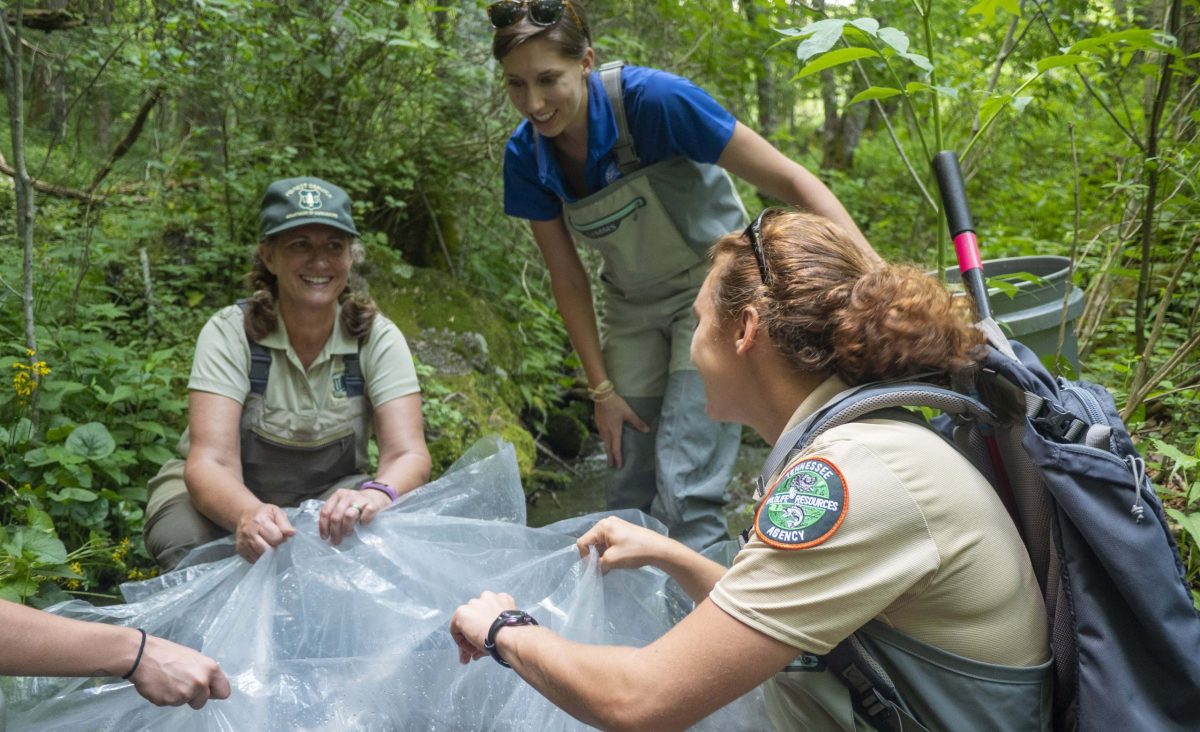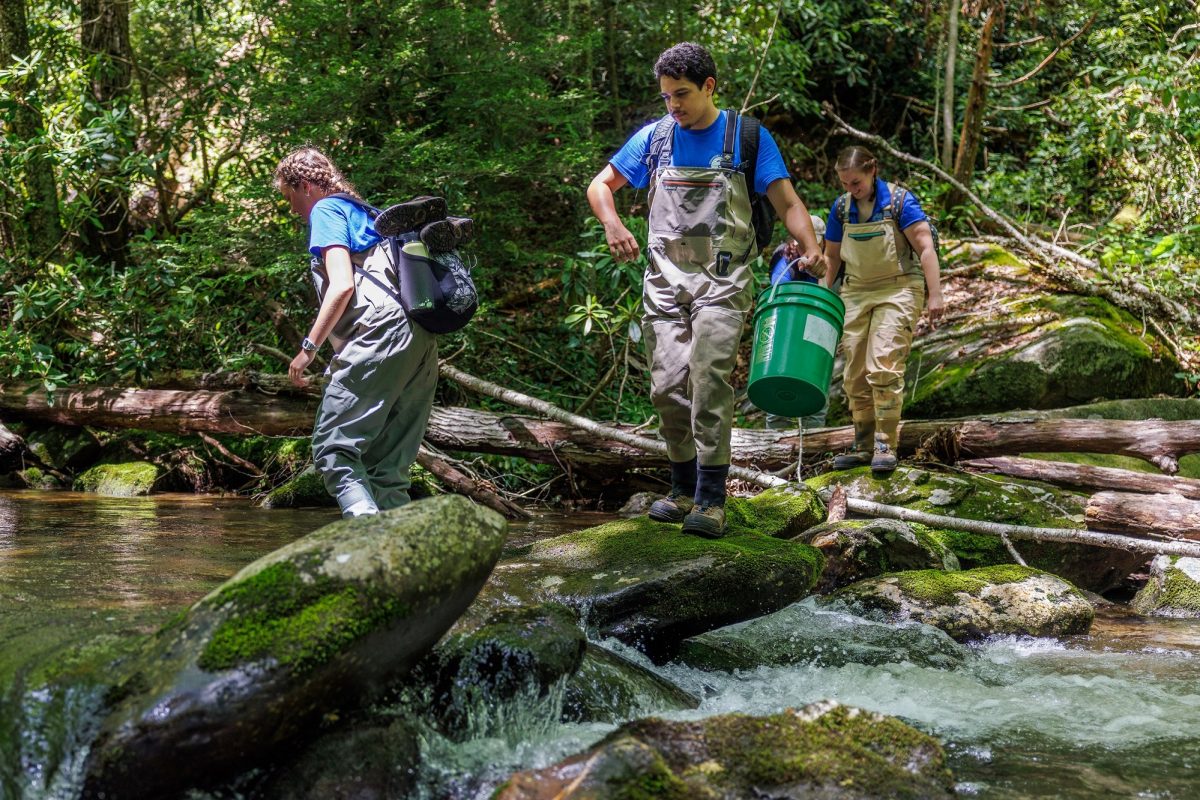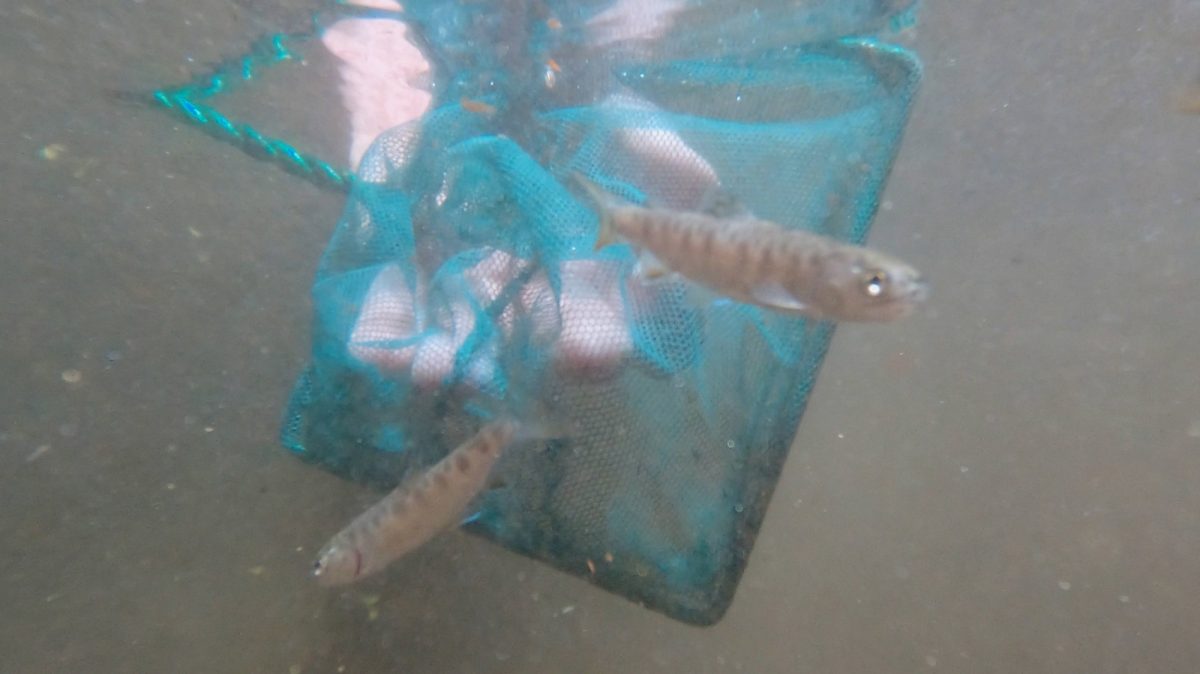Chattanooga, Tenn. (June 16, 2022) – In late May, a team from the Tennessee Aquarium, Tennessee Wildlife Resources Agency and Trout Unlimited hiked along — and occasionally waded through — a pristine tributary of South Fork Citico Creek in the Cherokee National Forest.
Navigating an obstacle course of tangled Mountain Laurel branches and moss-slickened boulders, they followed the stream as it gently descended through the Appalachian uplands. Occasionally, when a calm pool or shaded rocky overhang presented itself, they paused to dip their nets into five-gallon buckets filled with wriggling juvenile Southern Appalachian Brook Trout.
These little fish, raised to about two inches over the last six months, were the focus of more than six months of work at the Tennessee Aquarium Conservation Institute and the impetus for the hours-long trek into the Appalachian uplands.

“It’s important to try to conserve our native Southern Appalachian Brook Trout, because they are the only trout native to Tennessee,” says Aquarium Reintroduction Biologist Sarah Kate Bailey. “Days like today, being able to release these fish into their native habitat, makes all our hard work restoring this native species worth it.”
This year marks the end of the first decade of the Aquarium’s involvement in a now 40-year effort to restore the Southern Appalachian Brook Trout. That campaign was initiated by Tennessee Wildlife Resources Agency (TWRA) in the 1980s.
The goal of the partnering agencies was then, and remains, to reintroduce this beloved game fish — “brookies” to their would-be saviors and fans — to the native streams from which it had been ousted by human activity.
This decades-long struggle has sought to undo decisions made in the 1900s, when clearcutting of forests and the introduction of invasive Rainbow and Brown Trout made streams too warm and silt-filled for Brook Trout. By the 1980s, the species’ range had been reduced to just 15 to 20 percent of its historic span.
Restoration projects like this are nothing new to the Aquarium. By the time it joined the Brook Trout project, Aquarium freshwater scientists were already more than a decade into the marathon effort to bring Lake Sturgeon back to the Tennessee River.
That background of experience in caring for and raising juvenile fish made them an ideal partner in this effort, says Steve Fry, the president of the Appalachian Chapter of Trout Unlimited.
“From the start, we felt like the Tennessee Aquarium was a natural partner for us in our Brook Trout efforts,” Fry says. “We’re getting a little more mileage out of these releases thanks to this partnership, and we’re interested in doing more.”

For the last 10 years, the Aquarium’s spawning and propagation work with Southern Appalachian Brook Trout has been funded by Trout Unlimited through funds raised by the sale of special Brook Trout vanity license plates. Beginning with an initial grant of $9,560 in 2013, this program has funneled more than $80,000 — an average of $8,900 a year — to fuel the Aquarium’s Brook Trout work over the last decade.
“Most successful conservation projects are the result of many different partners working together,” says Aquarium Vice President of Conservation Science and Education Dr. Anna George. “We couldn’t do the work we do without partners like TWRA who restore streams to the condition they need to be in to support Southern Appalachian Brook Trout, or Trout Unlimited’s ongoing support of the program through their grant fund from trout license plate sales.”
For the last several years, the Aquarium has released trout in streams winding through the Cherokee National Forest abutting the Tennessee-North Carolina border.
The forest is split into northern and southern sections by the sprawling Great Smoky Mountains National Park. After a series of releases into streams in the northern Cherokee National Forest, reintroduction efforts in the past two years began targeting waterways in the Tellico River watershed in the forest’s southern half.
This southward shift was decided upon after welcome signs were found by TWRA that trout in previously stocked streams were beginning to reproduce on their own, an important measure of progress in the reintroduction effort.
“That is evidence that our restoration efforts are successful thus far,” Bailey says. “We are confident we can save this species.”


During their latest trek into the Cherokee, Bailey and the rest of the release team gradually slipped about 800 juvenile brookies into the stream. Combined with an additional 300 juveniles destined for a second release, this year’s total “class” of trout consisted of more than 1,130 individuals.
With this latest series of reintroductions, the Aquarium and its partners in the last decade have released more than 4,000 of Tennessee’s native trout back into their ancestral waters.
Despite the milestone of ten years of participation in this effort, few of the biologists involved were even aware of this year’s anniversary. Nevertheless, Dr. George says, if the end result of years— or even decades — of work to bring this beautiful fish back to Southern Appalachia is that more Southeasterners will be able to see and appreciate it, the result will be worth the challenge.
“Programs like this mean something much bigger than just the restoration of a single species,” she says. “Whether it’s a small headwater stream or the Tennessee River, the waterways of the Southeast are full of life.
“It’s our goal at the Tennessee Aquarium to not only celebrate this life with the community around us, but also protect it so that future generations inherit and cherish the same animals that we have today.”
To learn more about the work of the Tennessee Aquarium Conservation Institute, visit tnaqua.org/conserve/.
For more information about the specialty Trout Unlimited license plate program, visit tn.gov/revenue/title-and-registration/license-plates/available-license-plates/wildlife-and-animal/trout-unlimited.html